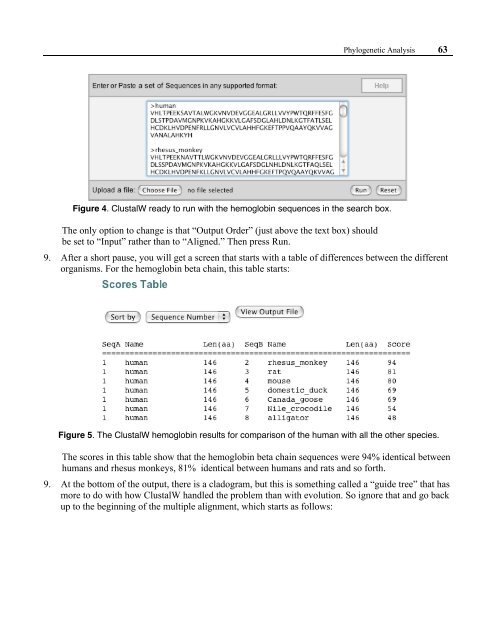An Introduction to Phylogenetic Analysis - Association for Biology ...
An Introduction to Phylogenetic Analysis - Association for Biology ...
An Introduction to Phylogenetic Analysis - Association for Biology ...
Create successful ePaper yourself
Turn your PDF publications into a flip-book with our unique Google optimized e-Paper software.
Figure 4. ClustalW ready <strong>to</strong> run with the hemoglobin sequences in the search box.<br />
The only option <strong>to</strong> change is that “Output Order” (just above the text box) should<br />
be set <strong>to</strong> “Input” rather than <strong>to</strong> “Aligned.” Then press Run.<br />
<strong>Phylogenetic</strong> <strong>An</strong>alysis 63<br />
9. After a short pause, you will get a screen that starts with a table of differences between the different<br />
organisms. For the hemoglobin beta chain, this table starts:<br />
Figure 5. The ClustalW hemoglobin results <strong>for</strong> comparison of the human with all the other species.<br />
The scores in this table show that the hemoglobin beta chain sequences were 94% identical between<br />
humans and rhesus monkeys, 81% identical between humans and rats and so <strong>for</strong>th.<br />
9. At the bot<strong>to</strong>m of the output, there is a cladogram, but this is something called a “guide tree” that has<br />
more <strong>to</strong> do with how ClustalW handled the problem than with evolution. So ignore that and go back<br />
up <strong>to</strong> the beginning of the multiple alignment, which starts as follows:
















